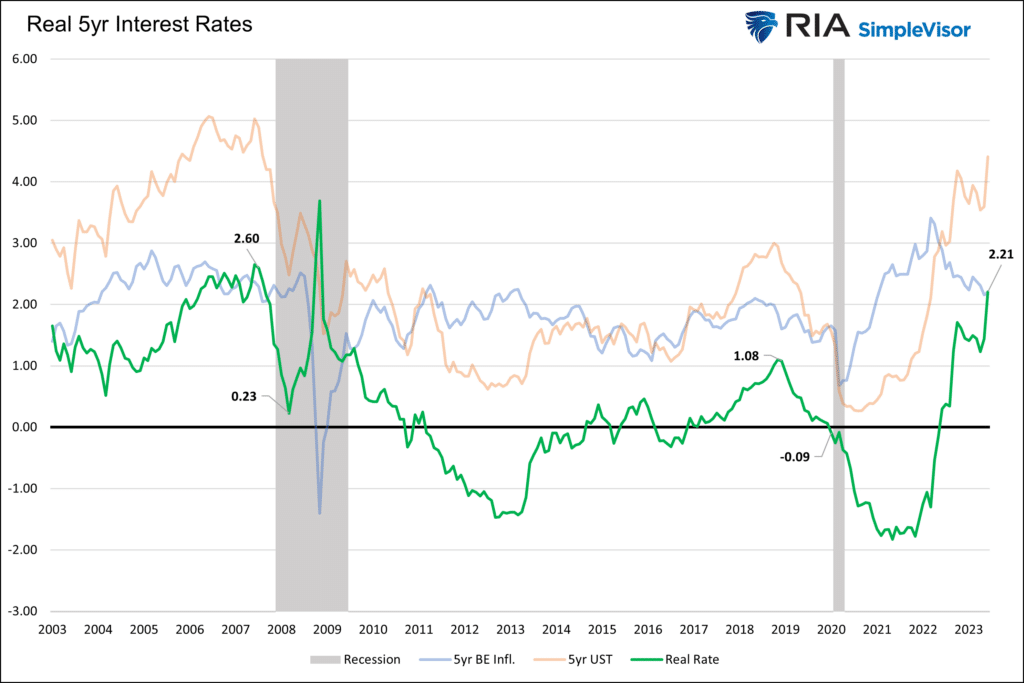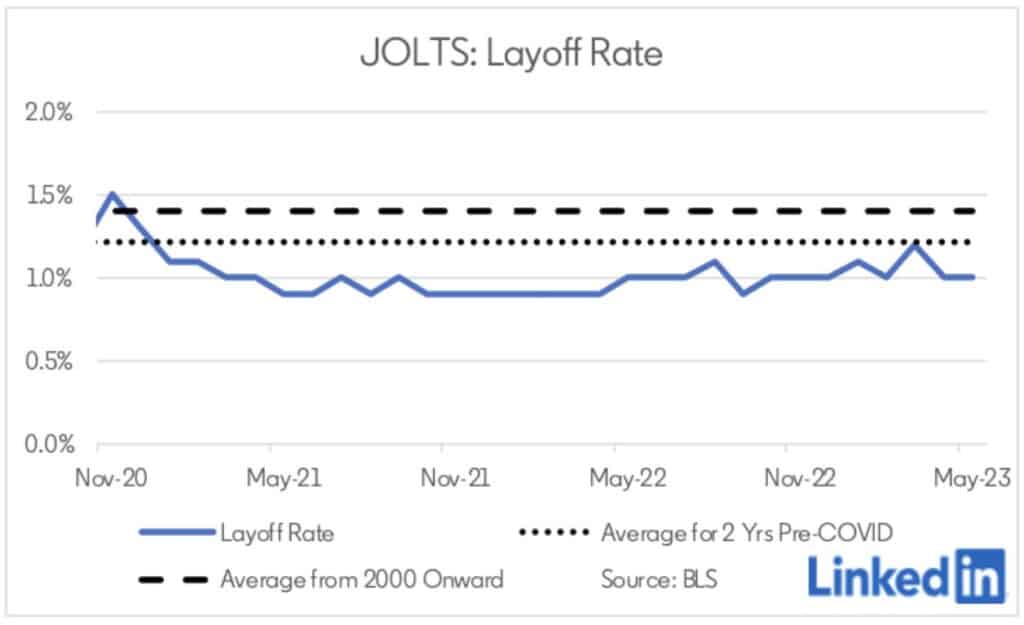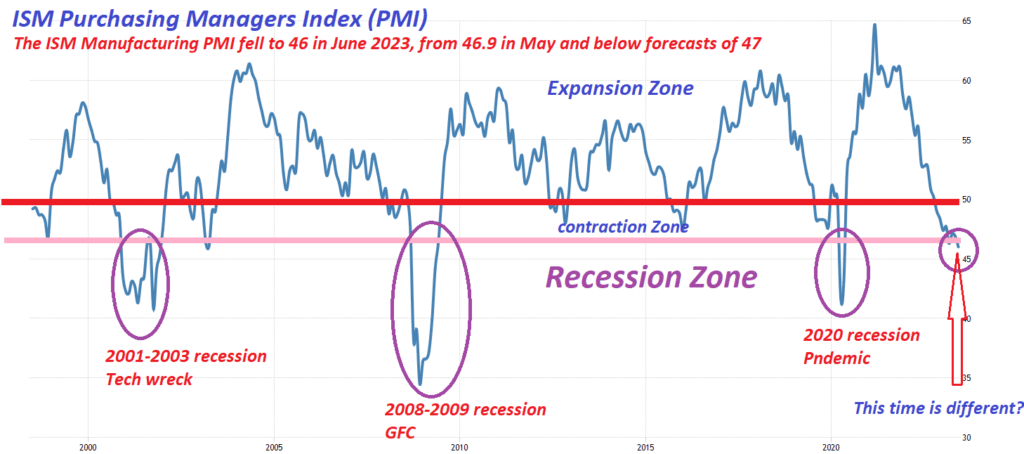The Federal Reserve closely follows how restrictive or easy its monetary policy is. While many indicators are available, such as yield curves, loan growth, and bank lending standards, real interest rates are their preferred indicator. Real rates are simply interest rates, less the expected inflation rate. More precisely, U.S. Treasury yields for various maturities are compared to market-implied inflation rates for the same periods. The graph below, for instance, shows 5 year real rates.
Currently, the 5 year real rate is over 2.20%. Such is the most restrictive policy since 2007. In 2007, the Fed started reducing Fed Funds in July, corresponding with the peak in 5 year real rates. Six months later, the 5 year real rate was near zero. The decline was solely a function of falling yields. In 2018, the Fed halted raising rates, and the 5 year real rate peaked at 1.08%. It fell to zero in about six months, again almost entirely due to yield not expected inflation. Further note, the decline occurred before the pandemic. The current real rate is very restrictive and will have a negative economic impact when the pandemic-related stimulus exits the system. Real rates will likely fall rapidly when such occurs, as in the prior two instances we highlight.

What To Watch Today
Market Trading Update

Sizzling Job Market and ISM Services Weigh on Markets
The ADP employment report more than doubled expectations at +497k new jobs. Small businesses and the leisure and hospitality sectors showed large employment gains. Not surprisingly, as discussed below, the manufacturing sector lost 42k jobs. The JOLT’s labor report was mixed. The number of job openings fell from 10.32 million to 9.82 million, but the Quits rate rose. Typically, the number of people quitting their jobs rises with confidence in their ability to find a better, higher-paying job. As shown below, the layoff rate remains flat at 1% and shows no signs of stress.
Yesterday’s strong ISM and ADP data were problematic for the stock and bond markets. The Fed Funds market is now pricing in a 95% of a 25bps rate hike at the July 26th meeting and a 35-40% chance of a second hike by year-end, as highlighted in the third table.



ISM Service and Manufacturing Sectors Recap
The ISM manufacturing and service sector surveys continue to point in opposite directions. The manufacturing survey released on Monday fell further into economic contractionary territory from 46.9 to 46.0. It has been below 50 since October and is now at its lowest level since May 2020, when the economy was shut down due to the pandemic. All of its components are also below 50. Of importance, prices paid fell to 41.8, and employment fell from 51.4 to 48.1. Simply manufacturing is in a recession, as shown in the first graph.
On the other hand, the service sector remains robust. Yesterday, the service sector ISM survey jumped to 53.9 from 51.0. New orders and employment rose, signaling a healthy economy. The index now sits at its highest level since February. The second graph shows the robust correlation between ISM services prices paid and CPI services excluding shelter. That derivative of CPI is one which Powell follows closely. As the graph shows, ISM services prices continue to fall. Consequently, if the correlation holds, that sub-component of CPI could be under 2% shortly.


Tweet of the Day

Please subscribe to the daily commentary to receive these updates every morning before the opening bell.
If you found this blog useful, please send it to someone else, share it on social media, or contact us to set up a meeting.
Also Read

















